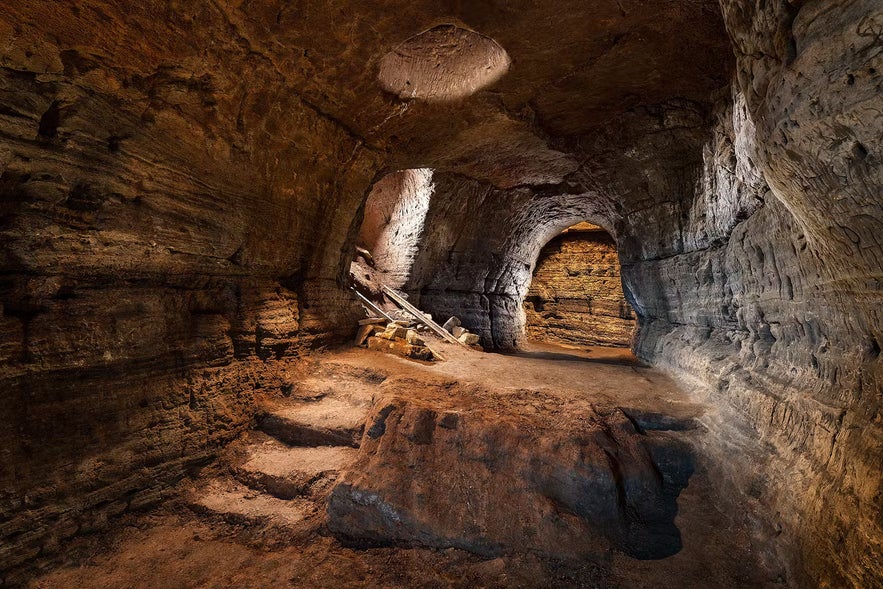
Also known as the Caves of Aegissida (Caves of Ægissíða in Icelandic), the Caves of Hella consist of 12 sandstone caves. Nobody knows the exact date of their construction or the reason they were built. However, many locals believe the caves to be one of Iceland's oldest human-made sites, dating back to the time of Icelandic settlement or earlier.
Four of the 12 caves were opened to the public in 2019, and you can visit them with an expert guide. A guided tour of the Hella Caves lets you learn more about the mystery behind the caves' formation and discover an intriguing underground world.
Why You Can Trust Our Content
Guide to Iceland is the most trusted travel platform in Iceland, helping millions of visitors each year. All our content is written and reviewed by local experts who are deeply familiar with Iceland. You can count on us for accurate, up-to-date, and trustworthy travel advice.
You can even drive to the caves yourself on a self-drive road trip, such as on this 10-day self-drive tour of Iceland's Ring Road. Book a guided tour of the caves and enjoy a picturesque journey along the South Coast to reach the entrance point.
Photo from Caves of Hella Guided Tour.
The History of the Caves of Hella
Unlike Iceland's various natural volcanic and coastal caves, the Caves of Hella were carved into the rock by humans. Their history is steeped in mystery, as historians still don't entirely know how old they are or what their purpose initially was.
It's widely thought that these caves date back to the Settlement of Iceland, which began in the late 9th century. Many people believe that Norse settlers in Iceland built the caves.
These early inhabitants were skilled in various construction techniques and survival in harsh conditions. They utilized the available natural resources, including the easily workable tuff rock, to create shelters, storage areas, and possibly places of worship or community gatherings.
Another theory about the caves is that they date back even earlier. Some people think that Celtic monks or settlers from the British Isles might have arrived in Iceland and could have had something to do with the construction of these caves.
Research into the caves' origins is ongoing. A team of American scientists is using innovative new technology to try to determine their age.
What Were the Caves of Hella Built For?
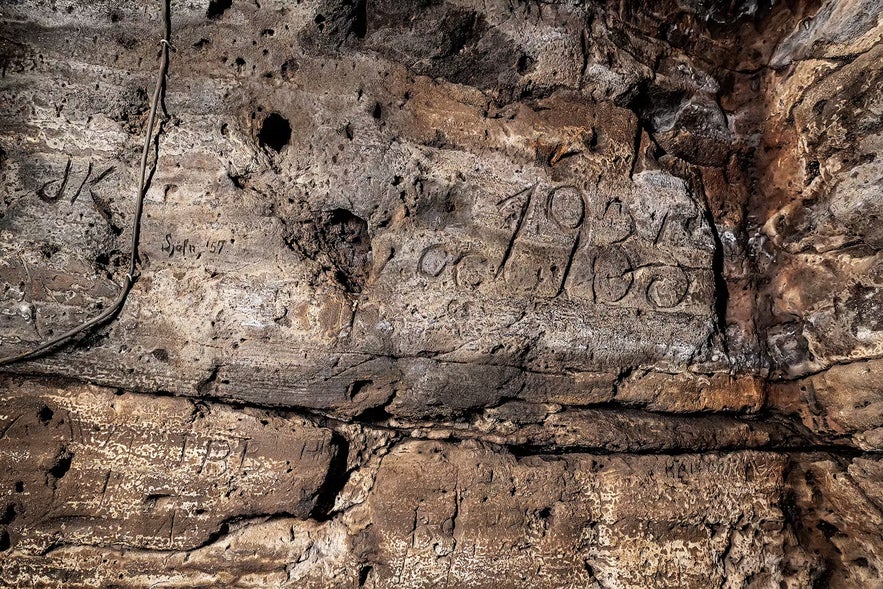
Photo from Caves of Hella Guided Tour.
Since historians aren't sure when the caves were built, it's difficult to know their initial purpose. Their origins have been the subject of lengthy research and various academic discussions.
Some historians believe the caves were built for shelter. The earth's insulating properties would have kept the interiors relatively warm in the harsh Icelandic winters. It's also possible they were used for storage, especially of perishable goods like meat or dairy.
There's also some evidence to suggest that certain caves would have been used for ceremonial or religious purposes. Historians have found crosses and other markings on the cave interiors, leading them to believe that the caves held ceremonial significance at some point.
Throughout the centuries since their construction, Icelandic farmers have used the caves as sheep sheds and barns.
Despite the lack of concrete information, the caves of Hella represent a fascinating aspect of Iceland's early settlement period, offering a unique glimpse into the lives and ingenuity of the island's first inhabitants.
How Can I Visit the Caves of Hella?
The Caves of Hella are near the town of Hella in South Iceland. They have a convenient location near the Ring Road, making them easily accessible from the capital city of Reykjavik. It's approximately 58 miles (94 kilometers) from Reykjavik to the Hella Caves.
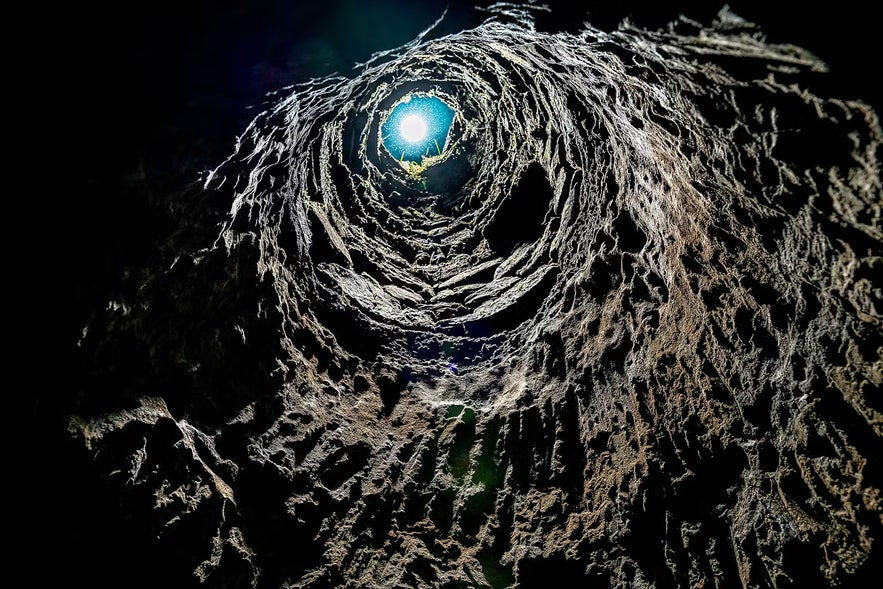
Photo from Caves of Hella Guided Tour.
The caves are just outside the town. Driving from Reykjavik (or the west), you'll find the entrance just before the Ring Road crosses the Ytri-Ranga River. If you go too far, don't worry — there's a roundabout just outside the town where you can turn around.
Reaching the Caves of Hella without a rental car is more challenging, but there are buses to the town of Hella. From the outskirts of Reykjavik (the Mjodd parking lot), you can take a number 51 bus to Hella, changing at the town of Selfoss.
You can visit the caves on a guided tour. Icelandic-language tours run between October and March but are less frequent (about once a month). All tickets include a guided tour of the caves. Tours last about 1 hour and 10 minutes. Visitors should arrive at least 10 minutes before their scheduled tour to check in and prepare.
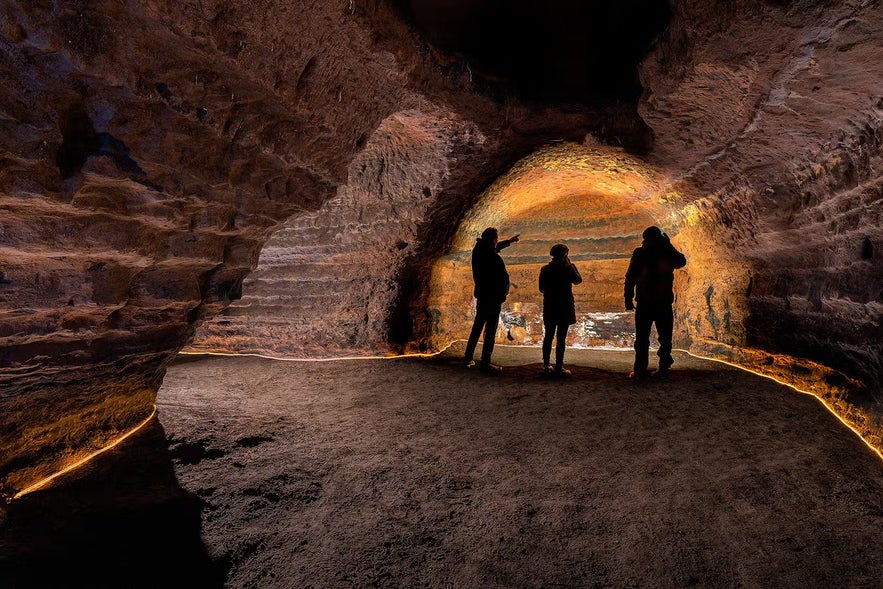
Photo from Caves of Hella Guided Tour.
What Other Attractions Are Near the Caves of Hella?
The area surrounding the Caves of Hella is rich in natural attractions, offering visitors a chance to explore Iceland's stunning landscapes further.
The Sundlaugin Hellu swimming pool in Hella is a great place to enjoy a swim. It has a large main pool, a children's pool, two water slides, and a few hot tubs.
There are also several beautiful waterfalls in the area. The Aegissidufoss waterfall is only two miles (about 3.5 kilometers) from the Hella Caves, so you can quickly stop off after your cave tour. Alternatively, the Arbaejarfoss waterfall is only three miles (about five kilometers) away.
Slightly further afield — about halfway between Selfoss and Hella — is the Urridafoss waterfall.
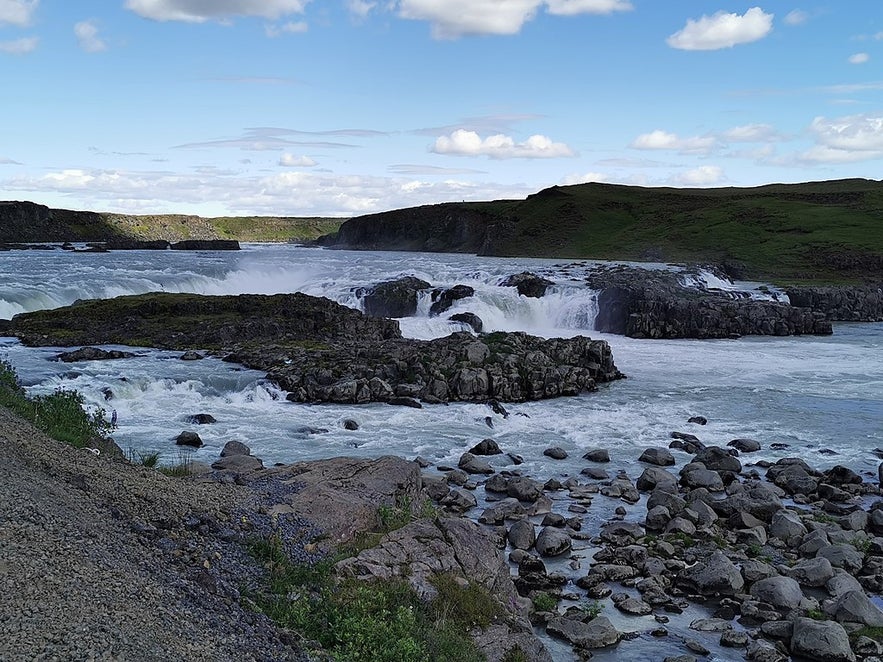
Photo from Wikimedia, Creative Commons, by Netha Hussain. No edits made.
If you'd rather learn more about Icelandic history, you can visit the Keldur turf house, roughly 12 miles (about 19 kilometers) from the caves. The site is one of Iceland's largest and oldest turf houses, making it a fantastic place to discover more about the country's early settlers.
The LAVA center in the town of Hvolsvollur is another nearby attraction — it's 8 miles (about 13 kilometers) from the caves. The center's interactive exhibits teach visitors about Iceland's volcanic activity in a fun and engaging way.
Animal lovers might want to take a horseback riding tour from Skeidvellir. You can enjoy views of mountains as you ride through the picturesque countryside on an Icelandic horse.









